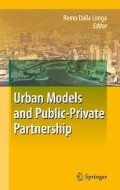Abstract
The all-embracing restructuring processes experienced in Hungarian cities, first of all in the capital city Budapest, are generally explained by the “mass privatization” of the previously state – or cooperatively – owned agrarian land, of the state-owned companies and the selling of the public housing stock to the sitting tenants after the political changes. This rough reasoning is completed by the stressing of the unprecedented speed of the conversion of public properties into private hands in contrast to the much slower similar processes in western cities. Even the best part of the Hungarian urban literature abstains from going beyond this level of interpretation. A more generalized argumentation calls the attention upon the effects of globalization that forces cities to meet the “gambling rules” of the world-wide competition among central places, that is, to meet the homogenized expectations of the “world capital” also on local level. These latter views are often overemphasized in popular discussions in Hungary by forgetting that the game has two players: even in the global space the public hand is, can be, in command of strong regulatory tools.
Access this chapter
Tax calculation will be finalised at checkout
Purchases are for personal use only
Notes
- 1.
Sections 4.7.1 and 4.7.2 were written in collaboration with real estate scientist Gábor Soóki Tóth.
References
Clark, E. (1992). On gaps in gentrification theory, Housing Studies, 7(1), pp. 16–26.
Dangschat, J. (1988). Gentrification: Der Wandel innenstadtnaher Wohnviertel. In: Kölner Zeitschrift für Sociologie und Socialpsychologie, Sonderheft 29, Köln.
Ekler, D., Hegedüs, J., & Tosics, I. (1980). A városépítés alkalmazott társadalmi-gazdasági modelljének elméleti és módszertani kérdései (Theoretical and methodological issues of an adapted social- economic model of urban growth). Budapest: BUVÁTI (not published).
Hamnett, C., & Randolph, W. (1986). Tenurial transformation and flat break-up market in London: the British condo experience. In: Gentrification of the city. Boston, MA: Allen and Unwin.
Hegedüs, J. (2005). A lakáspolitika alternatívái (Choices in housing policy). In K. Tausz (Ed.), A társadalmi kohézió erősítése (Strengthening social cohesion). Új Mandátum Könyvkiadó Budapest
Hist.Urban–ADHOC. (2008). Declaration for an integrated revitalization of historic centers. INTERREG IIIB CADSES project, part-financed by the European Union, Verona.
Kok, H. (2006). Restructuring retail property markets in Central Europe: Impacts on urban space. Heidelberg: Springer.
Kok, H., & Kovács, Z. (1998). The process of suburbanization in the agglomeration of Budapest. In: Journal of Housing and the Built Environment. Springer: Netherlands. http://www.spingerlink.com/t242k477h75t8077/.
Korcelli, P. (1990). Migration and residential mobility in the Warsaw region. In: J. Weesep & P. van Korcelli (Eds.), Residential Mobility and Social Change: Studies from Poland and the Netherlands. Amsterdam: Utrecht, KNAG (Netherlands Geografische Studies Nr. 106).
Ladányi, J. (2003). A zsidó népesség térbeni elhelyezkedésének változásai Budapesten 1870 és 2000 között. (The change of spatial location of the Jewish population in Budapest between 1870 and 2000). In: Perczel (Ed.), The old Jewish quarter of Pest. Budapest: VÁTI Kht.
Locsmándi, G., Szabó, J., & Alföldi, Gy. (2008). A településrendezési eszközök megvalósulását segítő jogszabály- és intézményfejlesztési javaslatok. (Proposals for the improvement of legal and institutional measures and methods to further the realization of official urban plans.) Department of Urban Planning and Design, Budapest University of Technology and Economics: Budapest.
Otthon Centrum. (2007). Lakáspiaci Monitor 2007/1 (Housing Market Monitore), Budapest, Otthon Centrum (Home Center). www.oc.hu/ingatlanpiac_lakaspiacmonitor_2007_1.
Perczel, A. (Ed.). (2003). Pest régi zsidónegyede (The Old Jewish Quarter of Pest). Budapest: VÁTI Kht.
Rév, P. (2007). Regeneration Program in Budapest – Józsefváros, Magdolna Quarter Program. Rehabilitation and Urban Development Company of Józsefváros, Budapest.
Rózsavölgyi, R., & Kovács, V. (2005). Housing subsidies in Hungary: Curse or blessing. In: Economic analysis from the European’s Directorate-General for Economic and Financial Affairs (ECFIN), Vol 2, Issue 18.
Scanlon, K., & Whitehead, Ch. (2004). International trends in housing tenure and mortgage finance. London: The Council of Mortgage Lenders.
Smith, N. (2002). New globalism, new urbanism: Gentrification as global urban strategy. Oxford, UK: Blackwell.
Smith, N. (2007). Gentrification in Berlin and the Revanchist State. (An interview with Neil Smith on gentrification trends in Berlin.) http://einstellung.so36.net/en/ps/524.
Studio Metropolitana – Ecorys. (2003). Javaslat Budapest rozsdaövezeteinek rehabilitációs koncepciójára (Proposal for the strategy of the renewal of Budapest’s brown-field zones). Budapest: Studio Metropolitana.
Studio Metropolitana. (2002). Budapesti Agglomeráció 1990–2000 (Metropolitan Zone of Budapest 1990-2000, report on the main processes in the metropolitan zone of Budapest).
Tosics, I., Szemző, H., Kőszeghy, L., & Erdősi, S., Jr. (2002). The Hungarian background report. In J. Vranken, P. De Decker, & I. Van Nieuwenjuyze (Eds.), Urban governance, social inclusion and sustainability. National context reports. Antwerpen, Appeldoorn: Garant.
Author information
Authors and Affiliations
Corresponding author
Editor information
Editors and Affiliations
Rights and permissions
Copyright information
© 2011 Springer-Verlag Berlin Heidelberg
About this chapter
Cite this chapter
Locsmándi, G. (2011). Large-Scale Restructuring Processes in the Urban Space of Budapest. In: Dalla Longa, R. (eds) Urban Models and Public-Private Partnership. Springer, Berlin, Heidelberg. https://doi.org/10.1007/978-3-540-70508-6_4
Download citation
DOI: https://doi.org/10.1007/978-3-540-70508-6_4
Published:
Publisher Name: Springer, Berlin, Heidelberg
Print ISBN: 978-3-540-70507-9
Online ISBN: 978-3-540-70508-6
eBook Packages: Business and EconomicsEconomics and Finance (R0)

